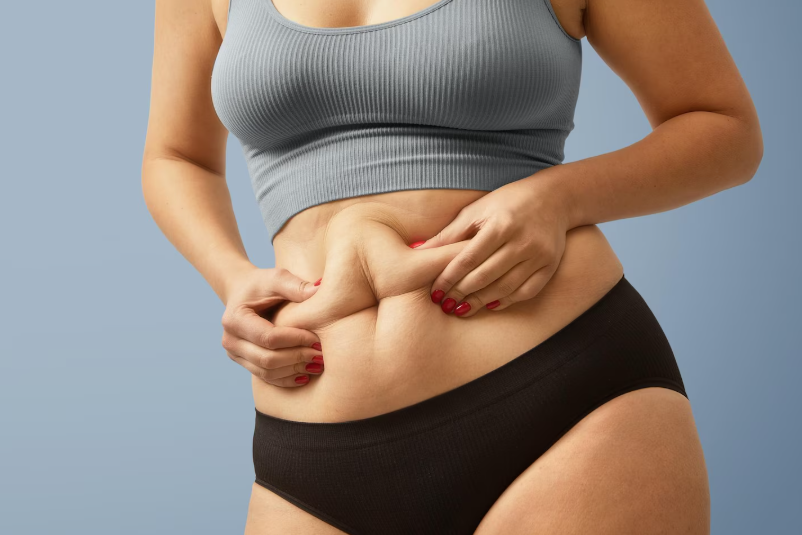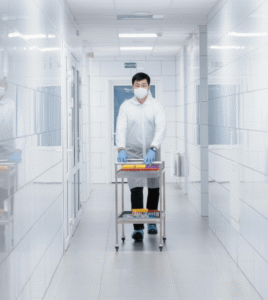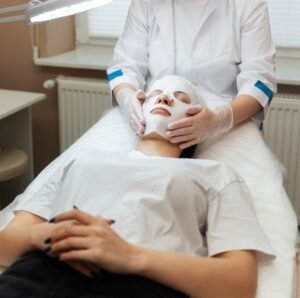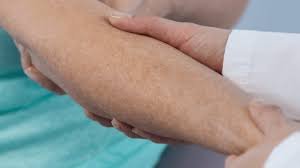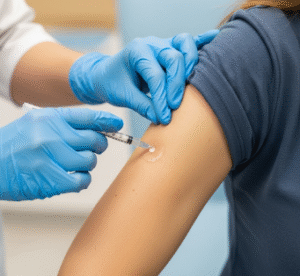What It Is
An extended abdominoplasty, or extended tummy tuck, is a surgical procedure that removes excess skin and fat from the abdomen, flanks (love handles), and sometimes the lower back while tightening the abdominal muscles.
It is a more comprehensive version of a full abdominoplasty, designed for patients who not only have loose skin in the front of the abdomen but also significant excess tissue extending around the sides of the waistline.
This procedure is often recommended for individuals who have lost a large amount of weight, mothers with stretched skin after multiple pregnancies, or patients with poor skin elasticity due to aging.
Why It’s Done
Patients choose extended abdominoplasty for:
- Removal of large amounts of loose skin across the abdomen, hips, and flanks.
- Repair of abdominal muscle separation (diastasis recti) for improved core strength.
- A smoother, flatter stomach and slimmer waistline.
- Better body proportions after significant weight loss or bariatric surgery.
Good candidates include:
- Men and women with excess skin extending beyond the abdomen.
- Patients with stubborn fat deposits around the waistline and flanks.
- Those in good general health and at a stable weight.
Alternatives
- Full abdominoplasty: Suitable for patients with skin and muscle laxity limited to the abdomen.
- Mini abdominoplasty: Best for mild lower belly laxity.
- Liposuction alone: Removes fat but cannot correct muscle weakness or large skin excess.
- Non-surgical treatments: Radiofrequency or ultrasound tightening may improve mild laxity but are not effective for severe cases.
Preparation
Before undergoing extended abdominoplasty in Korea, patients will:
- Attend a consultation to assess skin laxity, fat distribution, and abdominal muscle condition.
- Undergo medical tests (bloodwork, ECG, imaging if required).
- Stop smoking and alcohol at least 4 weeks prior to surgery.
- Avoid medications or supplements that increase bleeding.
- Arrange for at least 2 weeks off work and home support for early recovery.
How It’s Done
- Anesthesia: Performed under general anesthesia.
- Incision: A low horizontal incision is made across the lower abdomen, extending further toward the hips or lower back compared to a standard tummy tuck.
- Skin and fat removal: Excess skin and fat from the abdomen, waistline, and flanks are excised.
- Muscle tightening: Abdominal muscles are sutured together for core stability and a flatter contour.
- Navel repositioning: The belly button is repositioned naturally within the tightened skin.
- Duration: 3–5 hours, sometimes requiring an overnight hospital stay.
Recovery
- First week: Significant swelling and tightness are expected. Patients may walk slightly bent over for the first few days.
- Drains: Small tubes may be placed temporarily to prevent fluid buildup.
- Compression garment: Worn for 6–8 weeks to control swelling and support the new contour.
- Return to work: Light duties usually resume after 2–3 weeks.
- Exercise: Gentle walking is encouraged early, but strenuous activity should be avoided for 6–8 weeks.
- Final results: Visible after swelling decreases, with full contour improvements settling in 3–6 months.
Possible Complications
- Temporary numbness or sensitivity changes in the lower abdomen.
- Bruising, swelling, or seroma (fluid accumulation).
- Prominent scarring due to the longer incision (usually hidden beneath underwear).
- Rare risks: delayed healing, infection, asymmetry, or blood clots.
Treatment Options in Korea
Diagnosis
Korean surgeons perform a thorough physical examination, often using 3D imaging to plan the incision and demonstrate expected outcomes.
Medical Treatments
Mild cases may be managed with non-surgical skin tightening, but for patients with significant excess, surgery is the only effective solution.
Surgical or Advanced Therapies
- Extended abdominoplasty for patients with skin laxity and fat extending to the flanks.
- Liposuction-assisted tummy tuck for enhanced waistline sculpting.
- Fleur-de-lis abdominoplasty may be suggested if vertical skin laxity is also present (common after massive weight loss).
Rehabilitation and Support
- Close post-op monitoring for drain management and wound healing.
- Access to scar management treatments (laser therapy, silicone sheeting).
- Lymphatic drainage massages to reduce swelling.
- Detailed recovery plans provided by clinics, often with multilingual support for international patients.

